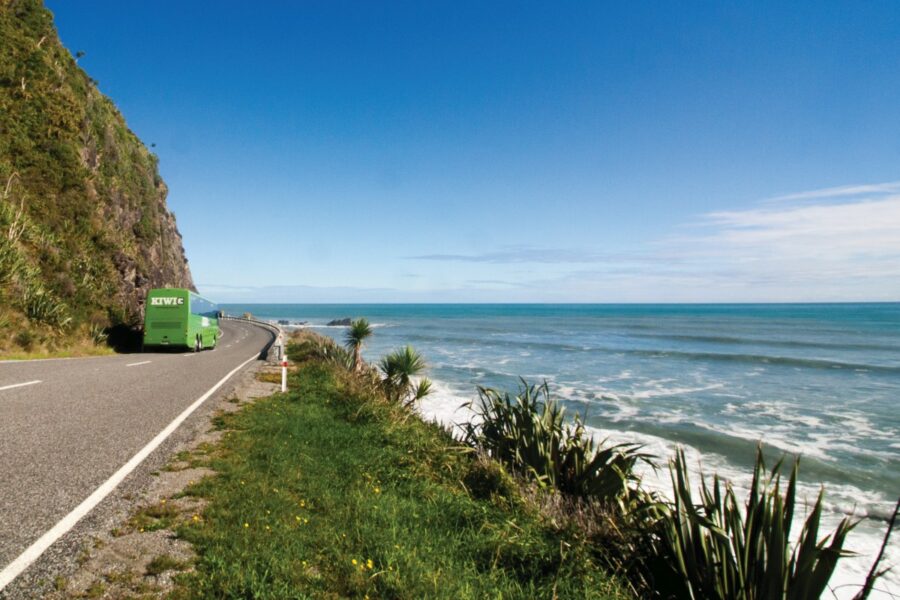The Rarest Marine Mammal Sightings in New Zealand
It’s no secret that New Zealand’s waters are teeming with life with top whale watching locations like Kaikoura in the South Island and awesome diving locations like Poor Knights Islands off the coast of the North Island. Yet there are some super rare and surprising sights seen in New Zealand’s waters.
If you spot any of the whales and dolphins listed below, which would be pretty amazing, to put it mildly, then take a picture (if you can) and report your sighting to the Department of Conservation by calling 0800 DOC HOT or fill out a Marine Mammal Sighting Form online.
It is especially urgent to report sightings of Maui’s dolphins and southern right whales, as they are an endangered species. You can check out exactly how you can help the Maui’s dolphin in our Find a Maui’s Dolphin article.
1. Maui’s Dolphins
The world’s smallest dolphins are extremely rare by being down to less than 100 dolphins. Maui’s dolphins are only seen off the North Island, usually pretty close to the shoreline. They are also the only dolphin species, apart from they sub-species brothers Hector’s dolphins in the South Island, with a rounded black dorsal fin, making them super easy to identify if near the North Island. Learn more about them in Find the Rare Maui’s Dolphin.
When and where to see them: Maui’s dolphins are seen up to 100 metres (330 feet) away from shore on the west coast of the North Island, usually between Auckland and Raglan.
 © vivtony00 on Flickr
© vivtony00 on Flickr2. Southern Right Whale/Tohora
Look out for these 14-15 metre (45-50 foot) long adults and 4.5-6 metre (15-20 foot) long calves identified by white growths on their heads. These white growths, called callosities, are different between each whale, making it easier to identify individuals. Southern right whales have no dorsal fin: another aspect making them easy to identify.
When and where to see them: From the mainland, you may get the rare opportunity to spot Southern right whales from the southern end of the South Island. However, they are more common in the waters around subantarctic Auckland and Campbell Islands.
 © Dr.Haus on Wikipedia
© Dr.Haus on Wikipedia3. Humpback Whale
New Zealand’s visitors from Antarctica, the humpback whale, grows up to 16 metres (52 feet) long. The coastal waters of New Zealand are part of their huge migration route of 710,000km (441,174 miles) every year between summer feeding grounds in Antarctica and winter breeding in tropical waters. You can identify a humpback whale by their black bodies, which are mostly white underneath. However, there is the exception of Migaloo, the albino humpback whale who has been spotted in New Zealand and Australia.
When and where to see them: The humpback whales’ New Zealand migration route usually lies in the Cook Strait (the waters between the North Island and South Island), as well as the east coast of New Zealand in winter and along the west coast in spring.
 © Whit Welles Wwelles14 on Wikipedia
© Whit Welles Wwelles14 on Wikipedia4. Blue Whale
Yes, the world’s largest mammal has been spotted in New Zealand’s waters. No doubt you will have heard about these giants of the sea spanning more than 30 metres (98 feet) long. They are a grey-blue colour with a flat u-shaped head. Sightings of them are so rare that information about where exactly these blue whales hang out is pretty limited. It is believed that they travel through New Zealand waters on a migratory route.
When and where to see them: Beats us, but recent research has suggested there could be a blue whale feeding ground in the South Taranaki Bight on the west coast of the North Island.
 © Don Ramey Logan on Wikipedia
© Don Ramey Logan on WikipediaMore Wildlife Wonders!
Can’t get enough of that marine wildlife? Us neither! Take a look at these articles for more about whales and dolphins in New Zealand.
Sources:
The information in this guide has been compiled from our extensive research, travel and experiences across New Zealand and the South Pacific, accumulated over more than a decade of numerous visits to each destination. Additional sources for this guide include the following:
- Tourism New Zealand (General travel advice - Updated [2024])
- Immigration New Zealand (Visa and immigration advice - Updated [2024])
- New Zealand Customs Service (Customs and Biosecurity - Updated [2024])
- New Zealand Traveller Declaration (NZTD online platform - Updated [2024])
- Tiaki Promise (Care for people place and culture - Updated [2024])
- Safe Travel (NZ travel advisories - Updated [2024])
- Stats NZ (Statistics and travel data - Updated [2024])
- Waka Kotahi NZ Transport Agency (Road and transport tips - Updated [2024])
- DriveSafe (Road safety - Updated [2024])
- Council websites and freedom camping maps (Local travel advice region by region - Updated [2024])
- AdventureSmart (Know before you go - Update [2024])
Our editorial standards: At NZ Pocket Guide, we uphold strict editorial standards to ensure accurate and quality content.

About The Author
Robin C.
This article has been reviewed and approved by Robin, who is the co-founder of NZ Pocket Guide. With more than 15 years of experience in the New Zealand tourism industry, Robin has co-founded three influential tourism businesses and five additional travel guides for South Pacific nations. He is an expert in New Zealand travel and has tested over 600 activities and 300+ accommodations across the country.












